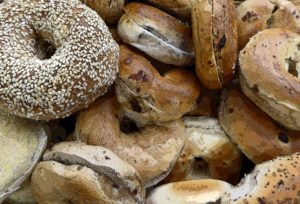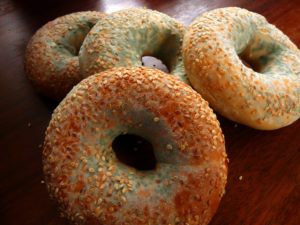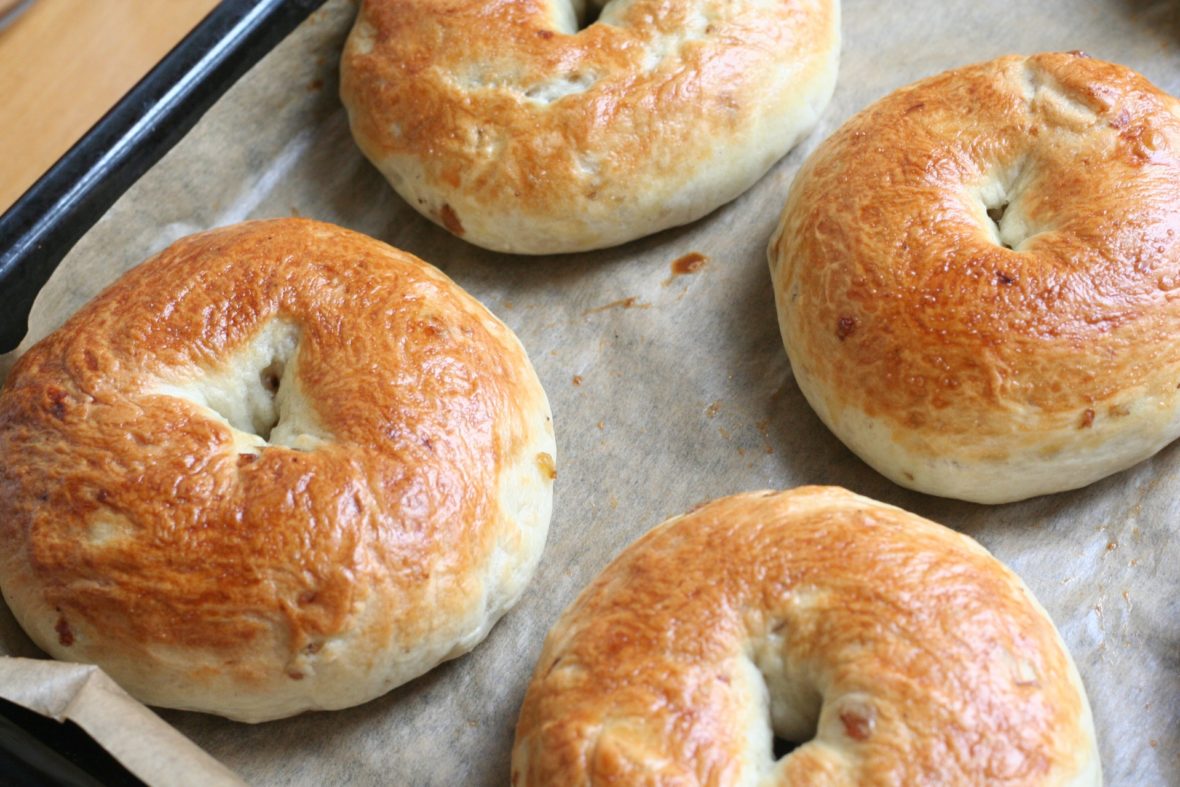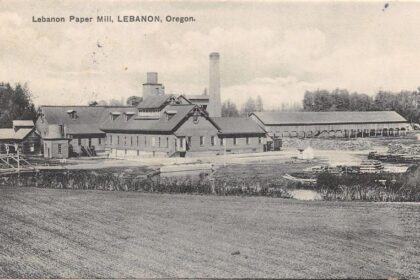A bagel, also spelled beigel, is a bread product originating in the Jewish communities of Poland. It’s traditionally shaped by hand into the form of a ring from yeasted wheat dough, roughly hand-sized, that is first boiled for a short time in water and then baked. The result is a dense, chewy, doughy interior with a browned and sometimes crisp exterior. Take a look below for 28 more fun and fascinating facts about bagels.
1. Bagels are often topped with seeds baked on the outer crust, with the traditional ones being poppy or sesame. Some may have salt sprinkled on their surface, and there are different dough types, such as whole-grain or rye.
2. Though the origins of bagels are somewhat obscure, it’s known that they were widely consumed in Ashkenazi Jewish communities from the 17th century.
3. The first known mention of the bagel, in 1610, was in Jewish community ordinances in Krakow, Poland.
4. Bagels are a popular bread product in North America, especially in cities with a large Jewish population, many with alternative ways of making them.

5. The basic roll-with-a-hole design of bagels is hundreds of years old and has other practical advantages besides providing for a more even cooking and baking of the dough.
6. The hole of the bagel could be used to thread string or dowel through groups of bagels, allowing for easier handling and transportation and more appealing seller displays.
7. Linguist Leo Rosten wrote in “The Joys of Yiddish” about the first known mention of the Polish word “bajgiel” derived from the Yiddish word “bagel” in the “Community Regulations” of the city of Krakow in 1610, which stated that the item was given as a gift to women in childbirth.
8. In the 16th and first half of the 17th centuries, the bajgiel became a staple of Polish cuisine and a staple of the Slavic diet generally.
9. In the Brick Lane district and surrounding area of London, England, bagels have been sold since the middle of the 19th century. They were often displayed in the windows of bakeries on vertical wooden dowels, up to a meter in length, on racks.
10. Bagels were brought to the United States by immigrant Polish Jews, with a thriving business developing in New York City that was controlled for decades by Bagel Bakers Local 338.

11. Daniel Thompson started work on the first commercially viable bagel machine in 1958.
12. Bagel baker Garry Lender, his son, Murray Lender, and Florence Sender leased Daniel Thompson’s bagel making technology and pioneered automated production and distribution of frozen bagels in the 1960s.
13. Around 1900, the “bagel brunch” became popular in New York City. The bagel brunch consisted of a bagel topped with lox, cream cheese, capers, tomato and red onion.
14. In Japan, the fist kosher bagels were brought by BagelK from New York in 1989.
15. There are 3 million bagels exported from the United States annually, and it has a 4%-of-duty classification of Japan in 2000.
16. Bagels are the only bread that are boiled before they are baked.

17. In the early 1900s, bagel makers worked in teams of four. Two people would make the dough and shape the bagels, one boiled the bagels and the fourth baked them.
18. Thomas’ is the largest producer of grocery store bagels in the United States. In 2014, Tomas’ sold more than 160 million bagels.
19. To make Thomas’ popular Limited-Edition Pumpkin Bagels, it takes 133,500 pounds of pumpkin puree.
20. It would take 2,231 bagels to go once around Grand Central Station Main concourse’s inside perimeter, which is 790 feet.
21. Bagels are said to have been created in 1683 to honor the King of Poland, after he protected the Austrian people from attack by Turkish invaders.
22. The first bagels were stirrup-shaped to praise the horsemen who saved the country.
23. American travel writers Beatrice and Ira Freeman described the bagel as an unsweetened doughnut with rigor mortis.

24. The world’s biggest bagel weighed 868 pounds and was shown at the New York state fair in 2004.
25. The International Beigel Bakers’ Union was formed in New York in 1907 by Eastern Europeans.
26. Traditional bagels in North America can be either Montreal-style bagel or New York style, although both styles reflect traditional methods used in Eastern Europe before bagels’ importation to North America.
27. The Montreal-style bagel contains malt and sugar with no salt; it is boiled in honey-sweetened water before baking in a wood-fired oven.
28. A flat bagel, known as a “flagel”, can be found in a few locations in and around New York City, Long Island, and Toronto.




